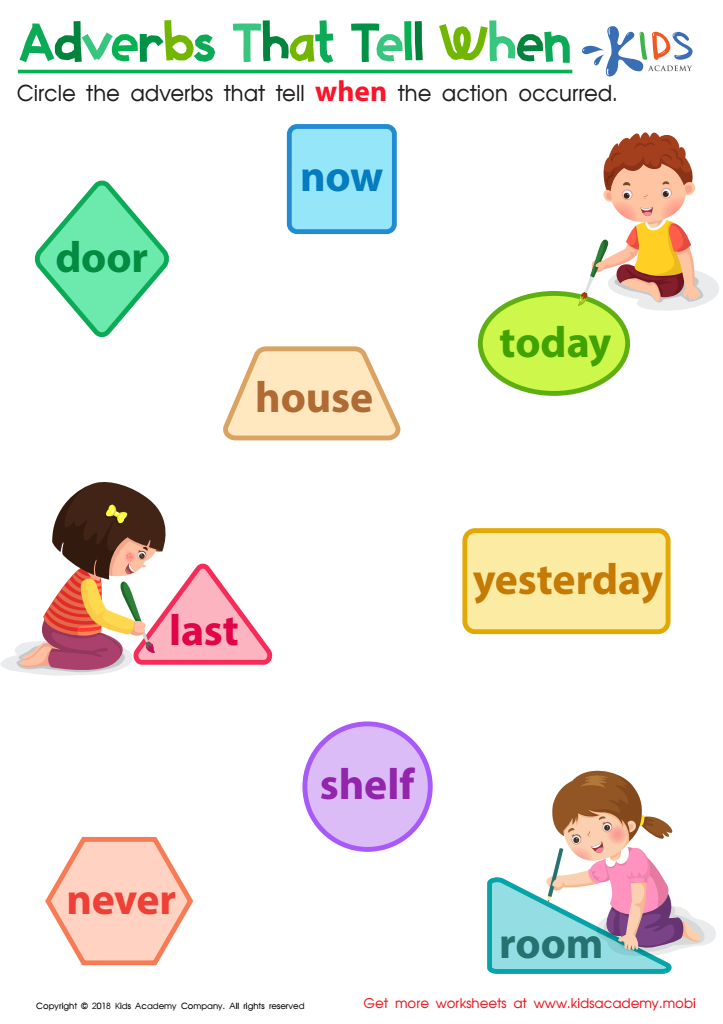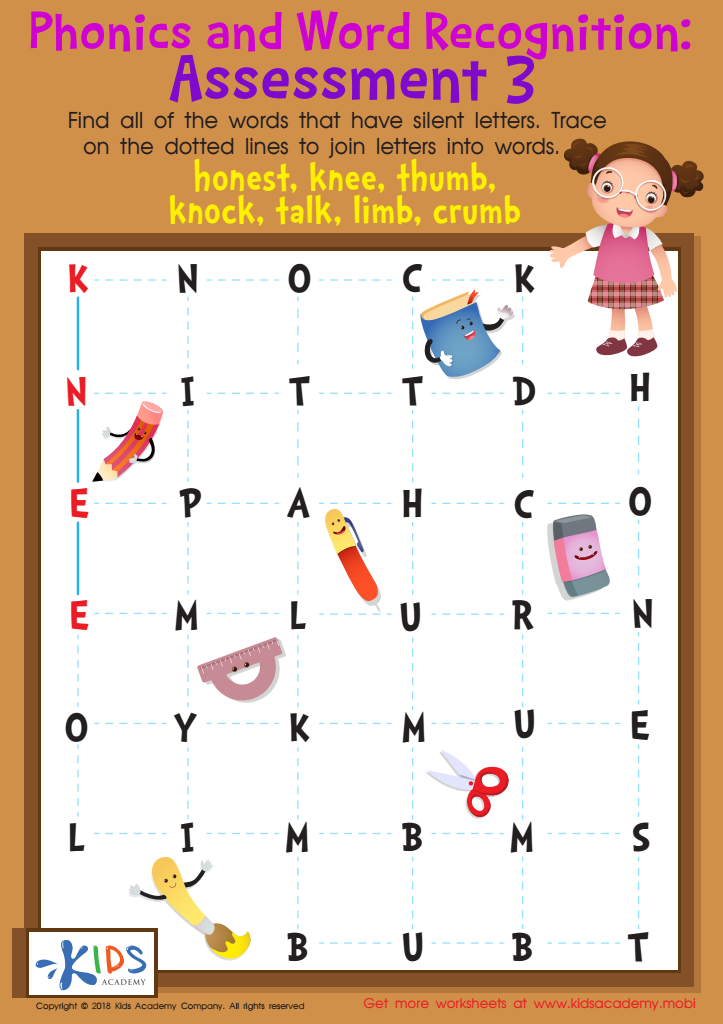Normal Writing Worksheets for Ages 4-9
178 filtered results
-
From - To
Discover our "Normal Writing Worksheets for Ages 4-9," designed to enhance your child's writing skills through engaging exercises. Tailored for young learners, these worksheets focus on developing fine motor skills, letter recognition, and basic sentence formation. Each activity encourages creativity while reinforcing essential writing concepts. Our age-appropriate worksheets are printable and easily accessible, making learning fun and interactive at home or in the classroom. Whether your child is just starting to write or looking to improve their skills, these resources provide the perfect balance of fun and educational content. Inspire a love for writing and watch your child's confidence soar!


Letter Spacing Practice Worksheet


Recognize Punctuation Marks Worksheet


Article Ants Worksheet


Tasty Verbs Worksheet


Where Are Pronouns? Worksheet


Adjectives in Sentences Worksheet


Adjectives: At The Zoo Worksheet


Adverb Shells Worksheet


Adverbs That Tell Where Worksheet


Starfish Adverbs Worksheet


Adverbs That Tell us When Worksheet


Dinner Time! Worksheet


The Native Americans Worksheet


Contractions Worksheet


Forming Sentences: Assessment 2 Worksheet


Preposition Planets Worksheet


Down by the Bay: Choose the Verb Worksheet


Where Is the Ant? Worksheet


Tracing Fun Worksheet


White Tracing Color Words Worksheet


Phonics and Word Recognition: Assessment 3 Worksheet


Phonics and Word Recognition: Assessment 2 Worksheet


Phonics and Word Recognition: Assessment 1 Worksheet


Greek and Latin Roots Worksheet
Normal writing for ages 4-9 is crucial for a child's overall development and literacy skills. During these formative years, children are beginning to express themselves and communicate through written language. It fosters critical thinking and creativity, allowing them to convey ideas, emotions, and stories, which enhances their social skills and emotional intelligence.
Developing strong writing skills at a young age lays the foundation for future academic success. Mastery of basic writing skills helps children in reading comprehension, vocabulary development, and even mathematical reasoning. It is essential for parents and teachers to foster an environment where writing is encouraged and celebrated, as this builds confidence in the child’s abilities.
Furthermore, writing can be a powerful tool for children to process their feelings and experiences. Encouraging writing provides an outlet for expression, helping them develop their voice and self-identity.
Promoting Normal writing and providing supportive feedback can significantly enhance a child's motivation and self-esteem. By cultivating these skills early on, parents and teachers are equipping children with the necessary tools for effective communication in all aspects of life, further preparing them for the complexities of both academic and personal relationships as they grow.
 Assign to My Students
Assign to My Students























